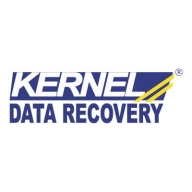

Find out what your peers are saying about NetApp, Zerto acquired by HPE, Nasuni and others in Cloud Migration.

Snowball is a petabyte-scale data transport solution that uses devices designed to be secure to transfer large amounts of data into and out of the AWS Cloud. Using Snowball addresses common challenges with large-scale data transfers including high network costs, long transfer times, and security concerns. Customers today use Snowball to migrate analytics data, genomics data, video libraries, image repositories, backups, and to archive part of data center shutdowns, tape replacement or application migration projects. Transferring data with Snowball is simple, fast, more secure, and can be as little as one-fifth the cost of transferring data via high-speed Internet.
Kernel Import PST to Office 365 serves as a reliable tool for transferring PST files into Office 365 accounts, offering streamlined migration for businesses.
Kernel Import PST to Office 365 is recognized for its ease of use and efficient handling of PST file migrations to Office 365. Technical users find its performance dependable, helping organizations manage data migration without hassle. It's favored for reducing manual workloads by automating and simplifying the migration process, ensuring data integrity and effective email management. The program supports batch migration and handles large volumes with ease, making it suitable for organizations of different sizes. Users sometimes suggest improvements in the speed of migration for larger datasets to enhance its effectiveness further.
What are the key features of Kernel Import PST to Office 365?Industries such as banking and legal services implement Kernel Import PST to Office 365 to streamline data migration tasks, ensuring that all client communications are securely transferred to the cloud. This adaptation helps maintain compliance and data integrity, vital for sectors handling sensitive information.
We monitor all Cloud Migration reviews to prevent fraudulent reviews and keep review quality high. We do not post reviews by company employees or direct competitors. We validate each review for authenticity via cross-reference with LinkedIn, and personal follow-up with the reviewer when necessary.